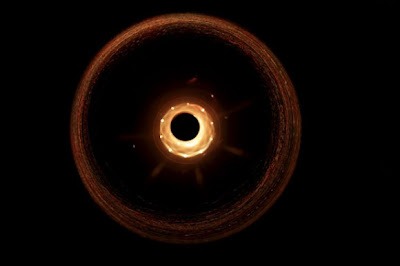The remnants of this explosion can be observed in wavelengths and x-rays, which shows the evidence indicating an asymmetrical explosion. One of its most interesting realities, however, is its lack of a neutron star. Typically, the by-product of a supernova is a spinning core referred to as a neutron star, which researchers can find using several different means.
When searching for W49B’s neutron star, however, they were presented with nothing, indicating the existence of a black hole. If this turns out to be the case, it will be a rare find for astronomers, and will provide an excellent chance for research into the creation of a black hole from a supernova. Says Daniel Castro, one of the co-authors of the project, stated: “It’s a bit circumstantial, but we have intriguing evidence the W49B supernova also created a black hole. If that is the case, we have a rare opportunity to study a supernova responsible for creating a young black hole.”
[via NASA]


0 comments:
Post a Comment